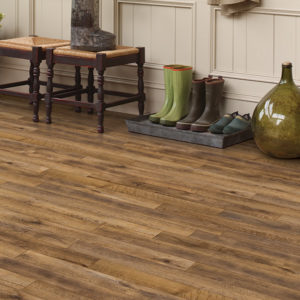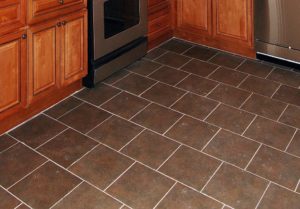Flooring: Ceramic Tiles or Luxury Vinyl Tiles?



You are so ready for home renovation, now you have been asked to choose between ceramic and vinyl tiles for your flooring by the vendor/contractor. So, what to answer? Appearance may not be the deciding factor, as luxury vinyl tiles perfectly match the calming look of hardwood or luxurious look of ceramic tiles today. Actually, the factors to take into consideration to make the right choice are rather different from the mere visual impression that these two materials convey. Both materials are wonderful in Virginia because they are moisture resistant. Like everything in life, ceramic and vinyl tiles have their pros and cons. Let’s go through them.
Fragile against robust. One of the drawbacks of ceramic tiles is that they are fragile. If a heavy object accidentally falls on your wonderful ceramic tile flooring, it is quite possible that one or two tiles get broken or cracked. And if the surface of a ceramic tile gets rubbed too hard, you can certainly leave some scrapes. Conversely, vinyl tiles are much more resistant; they are able to survive decades of usage without any cracks and scratches, despite the intense wear that your family imposes on them.
Cold against warm. Ceramic tiles creates huge, cold surfaces that are not a nice experience for your feet in winter. If you love walking barefoot inside your house, vinyl will assure you a warmer experience during the cold season. However, ceramic is much more porous, and it allows a high level of perspiration, which is very helpful especially during Virginia hot summers. In conclusion, vinyl cannot imitate the fine texture of ceramic, and this makes the difference at the moment you have to walk on it. Walking on a true ceramic floor is like walking on the beach: the pleasant feeling of the direct contact of your skin with refreshing ceramic tile flooring is something that could lead you to prefer ceramics, despite its many disadvantages.
Heavy against light. Ceramic tiles are heavier than vinyl tiles. Therefore, a ceramic tile flooring is not possible everywhere, particularly on the upper floors of your house. In traditional houses, ceramic tile floorings are common on the ground floor, where certain rooms are like the kitchen, while wood is preferred for the upper floors. This depends very much on the structure of each individual building. So, you might like to ask an architect or an engineer for advice on this point.
Easy against difficult to clean. Vinyl tiles are very easy to clean, while ceramic tiles require some specific products. Another problem with ceramic tiles is that they get easily spotted because of their porosity. If you do not love cleaning so much, vinyl could be a better option.
Recyclable against non–recyclable. Ceramic tiles can last forever, but they are not recyclable. On the contrary, vinyl tiles are recyclable in some cities and can be removed more easily than ceramic tiles. In conclusion, vinyl is more environmentally friendly than ceramic.
For other aspects, ceramic and vinyl tiles are similar. For example, they both work very well in humid environments like the bathroom. Costs are comparable, even though the installation of ceramic tiles is longer, more complicated and consequently more expensive, as it takes more working hours and it is necessary to utilize particular instruments like mortars as well.
In conclusion, luxury vinyl tiles are more environmentally friendly, practical, easy to install and robust than ceramic tiles. Yet, they lack some property of ceramic tiles like porosity and perspiration. The result is that they cannot replicate the unique, pleasant feeling of ceramics.
Photo credits: http://www.mannington.com/Residential/Adura
